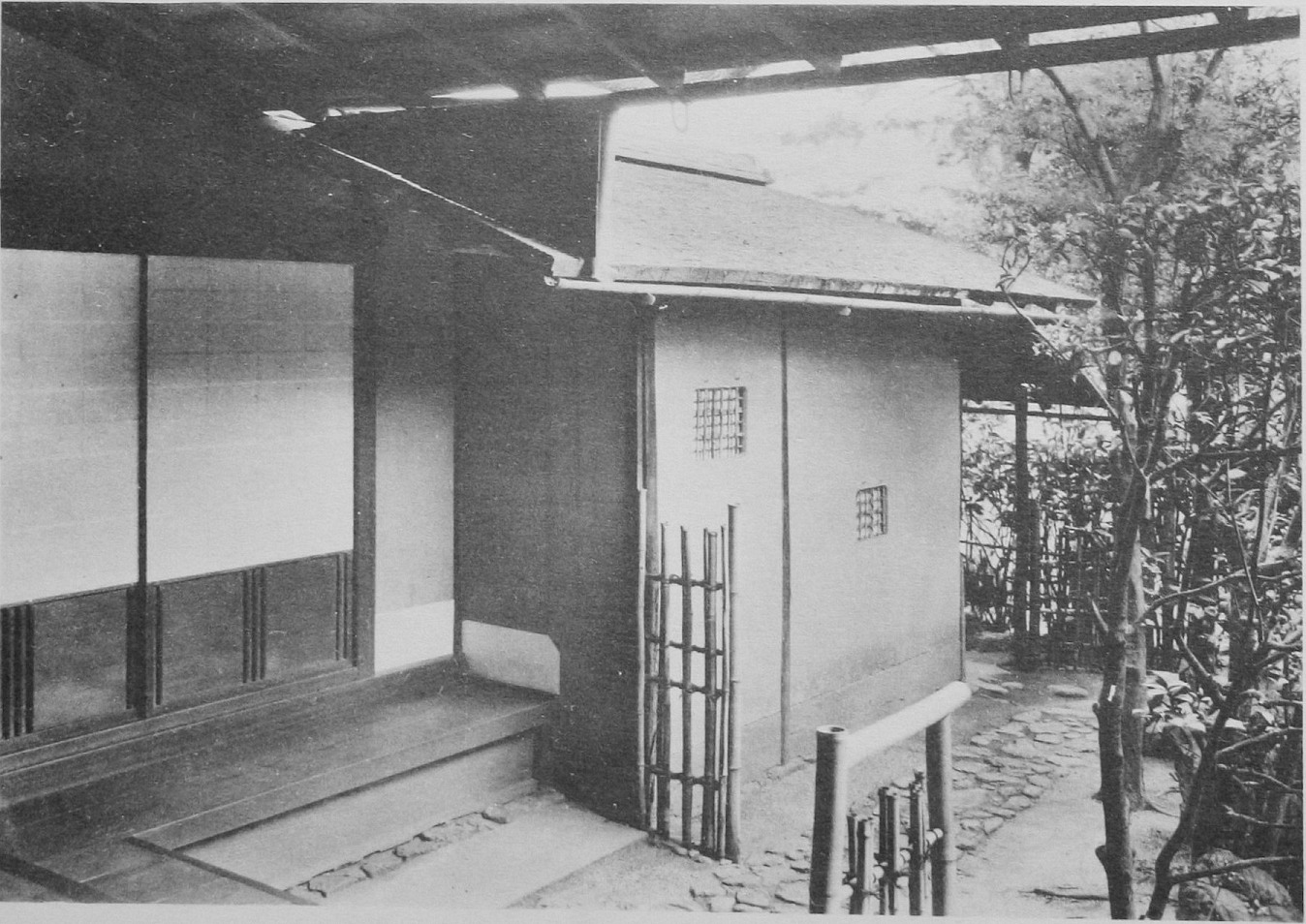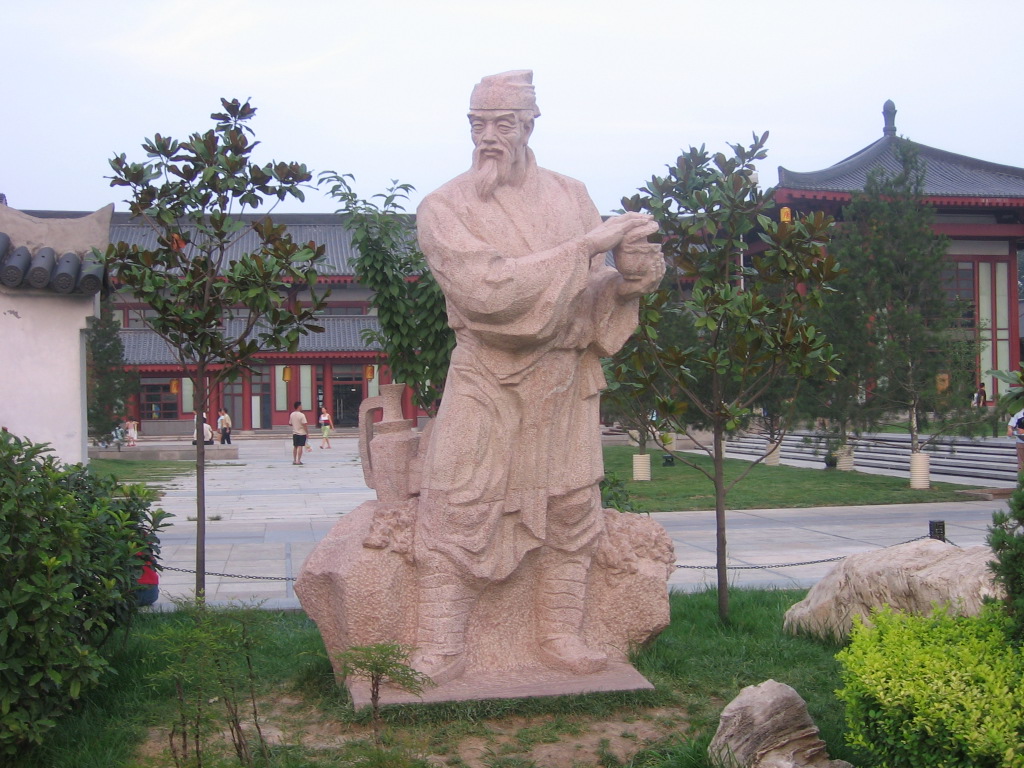|
Southern Record
is a purported book of secrets describing the teachings of the tea saint, Sen no Riky┼½. After the death of Rikyu, the book was lost with its author, Nanbo Sokei, a Zen priest and Rikyu's leading disciple. About one hundred years later, in 1686, Tachibana Jitsuzan, the chief vassal of the Kuroda clan purportedly happened to find the book while heading to Edo with his lord. Tachibana set about the task of transcribing the work into five volumes, adding two further volumes when more documents came to light. He then made a fair copy of the seven volumes, and the book was named ''Southern Record'' for the first time. The collection was highly regarded as a direct record of RikyuŌĆÖs teachings and exerted a great influence on the process of the concept building of ''wabi-cha''. However, modern researchers believe that the book contains information not from Sen no Riky┼½ and regard it as a forgery. Chapters :First Scroll: Memorandum ÕĘ╗õĖĆ Ķ”ܵøĖŃĆĆ :Second Scroll: Gatherings ÕĘ╗õ║ī õ╝ ... [...More Info...] [...Related Items...] OR: [Wikipedia] [Google] [Baidu] |
Sen No Rikyū
, also known simply as Riky┼½, is considered the historical figure with the most profound influence on ''chanoyu,'' the Japanese "Way of Tea", particularly the tradition of '' wabi-cha''. He was also the first to emphasize several key aspects of the ceremony, including rustic simplicity, directness of approach and honesty of self. Originating from the Sengoku period and the AzuchiŌĆōMomoyama period, these aspects of the tea ceremony persist. Riky┼½ is known by many names; for consistency, he will be referred to as Riky┼½ in this article. There are three ''iemoto'' (''s┼Źke''), or 'head houses' of the Japanese Way of Tea, that are directly descended from Riky┼½: the Omotesenke, Urasenke, and Mushak┼Źjisenke, all three of which are dedicated to passing forward the teachings of their mutual family founder, Riky┼½. Early life Riky┼½ was born in Sakai in present-day Osaka Prefecture. His father was a warehouse owner named , who later in life also used the family name Sen, and his ... [...More Info...] [...Related Items...] OR: [Wikipedia] [Google] [Baidu] |
Zen Buddhism
Zen ( zh, t=ń”¬, p=Ch├Īn; ja, text= ń”ģ, translit=zen; ko, text=ņäĀ, translit=Seon; vi, text=Thiß╗ün) is a school of Mahayana Buddhism that originated in China during the Tang dynasty, known as the Chan School (''Ch├Īnzong'' ń”¬Õ«Ś), and later developed into various sub-schools and branches. From China, Ch├Īn spread south to Vietnam and became Vietnamese Thiß╗ün, northeast to Korea to become Seon Buddhism, and east to Japan, becoming Japanese Zen. The term Zen is derived from the Japanese pronunciation of the Middle Chinese word ń”¬ (''ch├Īn''), an abbreviation of ń”¬ķéŻ (''ch├Īnn├Ā''), which is a Chinese transliteration of the Sanskrit word Óż¦ÓźŹÓż»ÓżŠÓż© ''dhy─üna'' ("meditation"). Zen emphasizes rigorous self-restraint, meditation-practice and the subsequent insight into nature of mind (Ķ”ŗµĆ¦, Ch. ''ji├Ānx├¼ng,'' Jp. '' kensho,'' "perceiving the true nature") and nature of things (without arrogance or egotism), and the personal expression of this insight in daily ... [...More Info...] [...Related Items...] OR: [Wikipedia] [Google] [Baidu] |
Kuroda Clan
Kuroda (written: lit. "black ricefield") is a Japanese surname. Notable people with the surname include: *, Japanese painter * Akinobu Kuroda ķ╗Æńö░ µśÄõ╝Ė, Japanese historian *Chris Kuroda, lighting designer and operator for the band Phish and Justin Bieber, among others *Emily Kuroda (born 1952), American actress *, Japanese actress *, governor of Bank of Japan and former president of Asian Development Bank *, Japanese-born English actress *, Japanese baseball player *, pen name of a Japanese manga artist *, Japanese painter *, Japanese far-left philosopher and social theorist *, famed strategist under Toyotomi Hideyoshi *, Samurai, son of Kuroda Kanbei *, Japanese politician and second Prime Minister of Japan *, Japanese haiku poet *, Japanese ornithologist *, Japanese writer *Paul Kuroda, (1917-2001), Japanese-American nuclear scientist *Robert T. Kuroda (1922ŌĆō1944), American soldier Medal of Honor recipient *, linguist, inventor of the Kuroda normal form In formal language th ... [...More Info...] [...Related Items...] OR: [Wikipedia] [Google] [Baidu] |
Wabi-cha
''Wabi-cha'' (; ; ), is a style of Japanese tea ceremony particularly associated with Sen no Riky┼½, Takeno J┼Ź┼Ź and its originator Murata Juk┼Ź. ''Wabi-cha'' emphasizes simplicity. The term came into use in the Edo period, prior to which it was known as ''wabi-suki'' (), ''suki'' meaning "artistic inclination", and "''wabi''" meaning 'forlorn'. History By the latter years of the Muromachi period, tea ceremony had become widespread, with a preference for expensive wares of Chinese origin known as ''karamono''. ''Wabi-cha'' evolved as part of a movement to appreciate local wares and simpler styles. Generally, three main figures are credited with the development of the wabi-cha aesthetic form of chanoyu: first, Murata Juk┼Ź; then, Takeno J┼Ź┼Ź; and finally, Sen no Riky┼½. Riky┼½ cited two poems from the ''Shin Kokin Wakash┼½'' poetry anthology of the early thirteenth century, as exemplifying his ''wabi'' aesthetic. One, a favorite of Takeno J┼Ź┼Ź's, is by Fujiwara no Teika (116 ... [...More Info...] [...Related Items...] OR: [Wikipedia] [Google] [Baidu] |
Lu Yu
Lu Yu (; 733ŌĆō804) or Lu Ji (ķÖåń¢Š), courtesy name Jici (ÕŁŻń¢Ą) was a Chinese tea master and writer. He is respected as the Sage of Tea for his contribution to Chinese tea culture. He is best known for his monumental book ''The Classic of Tea,'' also known as ''Ch'a Ching'' (simplified Chinese: ĶīČń╗Å), the first definitive work on cultivating, making and drinking tea. Biography Lu Yu was born in 733 in Tianmen, Hubei. For six years, Lu Yu stayed in Huomen mountain studying under the guidance of master Zou Fuzi. During this period, Lu Yu often brewed tea for his teacher. He also took care of fellow students' health using his remarkable knowledge in tea and herbs that he learned while at the Longgai Monastery. Whenever time permitted between his studies Lu Yu often went to the countryside to gather tea leaves and herbs. In one of those trips Lu Yu stumbled upon a spring underneath a 6-foot round rock and the water from the spring was extremely clear and clean. When Lu Yu ... [...More Info...] [...Related Items...] OR: [Wikipedia] [Google] [Baidu] |
The Classic Of Tea
''The Classic of Tea'' or ''Tea Classic'' () is the first known monograph on tea in the world, by Chinese writer Lu Yu between 760 CE and 762 CE, during the Tang dynasty. Lu Yu's original manuscript is lost; the earliest editions available date to the Ming dynasty. According to tea lore, Lu Yu was an orphan of Jinling county (now Tianmen City in Hubei Province) who was adopted by a Buddhist monk of the Dragon Cloud Monastery. He refused to take up the monastic robes and was assigned menial jobs by his stepfather. Lu Yu ran away and joined the circus as a clown. At age 14, Lu Yu was discovered by the local governor Li Qiwu, who offered Lu Yu the use of his library and the opportunity to study with a teacher. During the An Lushan and Shi Siming rebellion period, Lu Yu retired to Shaoqi (now Wuxing county, Zhejiang). Lu Yu made friends with many literati, including the calligrapher Yan Zhenqing and the poet Huangfu Zheng. For Lu Yu, tea symbolized the harmony and mysterious ... [...More Info...] [...Related Items...] OR: [Wikipedia] [Google] [Baidu] |
Tea Ceremony
An East Asian tea ceremony, or ''Ch├Īd├Āo'' (), or ''Dado'' ( ko, ļŗżļÅä (ĶīČķüō)), is a ceremonially ritualized form of making tea (ĶīČ ''cha'') practiced in East Asia by the Chinese, Japanese, and Koreans. The tea ceremony (), literally translated as either "''way of tea''", "''etiquette for tea or tea rite''", or "''art of tea''" in any of the three East Asian languages, is a cultural activity involving the ceremonial preparation and presentation of tea. The Japanese tea ceremony and Korean tea ceremony were influenced by the Chinese tea culture during ancient and medieval times, starting in the 9th century when tea was first introduced to Japan and Korea from China. One can also refer to the whole set of rituals, tools, gestures, etc. used in such ceremonies as tea culture. All of these tea ceremonies and rituals contain "an adoration of the beautiful among the sordid facts of everyday life", as well as refinement, an inner spiritual content, humility, restraint and simplicity ... [...More Info...] [...Related Items...] OR: [Wikipedia] [Google] [Baidu] |
Japanese False Documents
Japanese may refer to: * Something from or related to Japan, an island country in East Asia * Japanese language, spoken mainly in Japan * Japanese people, the ethnic group that identifies with Japan through ancestry or culture ** Japanese diaspora, Japanese emigrants and their descendants around the world * Japanese citizens, nationals of Japan under Japanese nationality law ** Foreign-born Japanese, naturalized citizens of Japan * Japanese writing system, consisting of kanji and kana * Japanese cuisine, the food and food culture of Japan See also * List of Japanese people * * Japonica (other) * Japonicum * Japonicus * Japanese studies Japanese studies (Japanese: ) or Japan studies (sometimes Japanology in Europe), is a sub-field of area studies or East Asian studies involved in social sciences and humanities research on Japan. It incorporates fields such as the study of Japanese ... {{disambiguation Language and nationality disambiguation pages ... [...More Info...] [...Related Items...] OR: [Wikipedia] [Google] [Baidu] |


